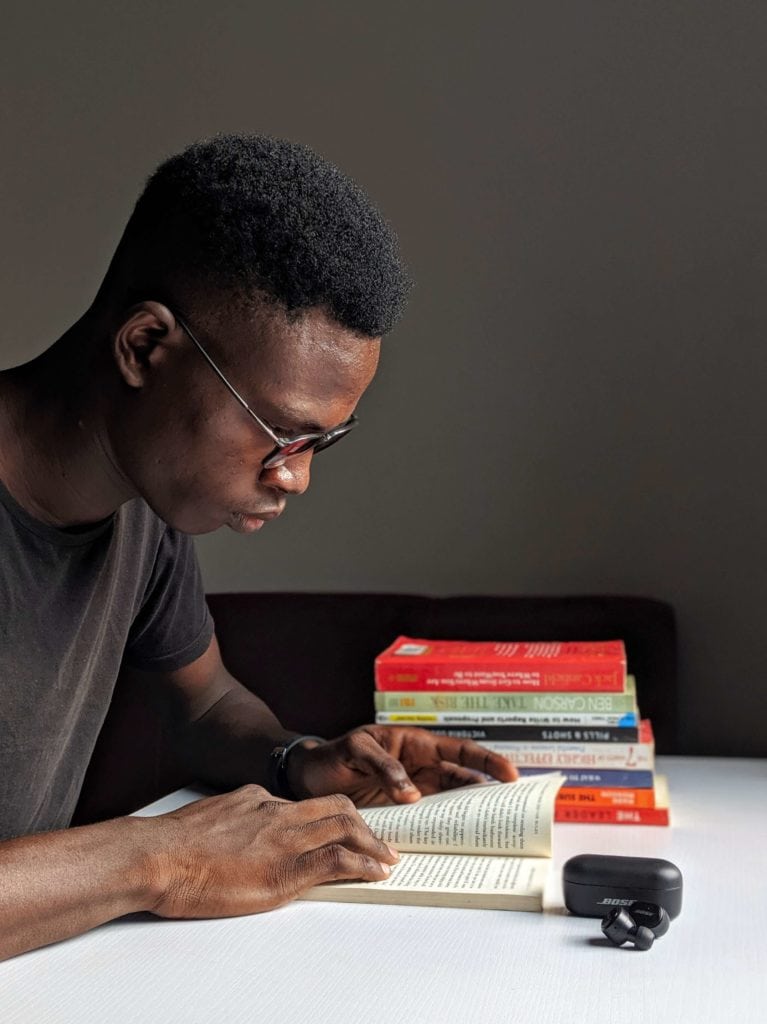What is Presbyopia, and how can I correct it?


February 19, 2020
What is Presbyopia, and how can I correct it?
Ok, listen up: this is probably the hardest thing to understand about our vision, and usually isn’t explained well, so I’ll try a little different angle, by using the term “focusing power,” to mean bringing light rays together like the point of a pencil, or the tip of a cone. I hope this helps! So if you really want to understand, put your thinking caps on. And if you’re old enough to have heard of a thinking cap, you are presbyopic.
First, Some Things to Keep in Mind:
- Distant objects: the light rays reflected off them are mostly parallel like your fingers all pointing in the same direction, and need to be focused perfectly on the back of the eye to be seen clearly. (Fig. 1a)
- Near objects: Need more focusing power than distant objects because the light rays reflected off of them are moving apart like your fingers spread apart. (Fig. 1b)
- The front of our eye is curved, and the more it’s curved, the more it focuses or bends light rays.
- Light rays need to be “bent” or focused by the front of your eye just the right amount to make a clear picture on the back of your eye
- The Normal eye: has the correct amount of focusing power to see distant objects. (Fig. 2a)
- The Nearsighted eye: has too much focusing power for distant objects. (Fig. 2b)
- The Farsighted eye: has too little focusing power for distant objects. (Fig. 2c)
- Crystalline lens: the clear flexible lens that adds focusing power when needed. It sits behind the colored part of your eye


When your vision is blurry for distant objects, you’ve either got too much or too little focusing power. If you’ve noticed your prescription for glasses, it will have either a “minus” sign, meaning we need to subtract focusing power with glasses, or a “plus” sign, meaning we need to add focusing power with glasses.
When we’re in our 20s and 30s, the crystalline lens in our eye is flexible and has muscles to change its shape to add focusing power. So if you’re farsighted, you may not need glasses, because the lens is flexible and can add as much focusing power as we need to make distant objects clear. As we age, the lens gets less and less flexible and can add less focusing power. So a farsighted person will first notice difficulty focusing on near objects, which take more focusing power.
The Tipping Point for Presbyopia: 45 Years Old
Here’s the thing: no one can have clear vision for both near and distant objects forever. As we age and the lens of our eyes gets less flexible, the ability to add focusing power goes to zero when we’re over 50. We invariably notice it between 45 and 50. And everyone (myself included) thinks it won’t happen to them. It will. As we age, our eyes lose the ability to change their point of focus.
If you’re:
- Over 50 and have “normal eyes” (never needed glasses when you were younger), you will need “plus” lenses (reading glasses) to see near objects.
- Over 50 and nearsighted, you’ll need “minus” lenses to see distant objects. You can still see things better up close without your glasses because your eye has too much focusing power.
- Over 50 and farsighted, you will need “plus” lenses to see distant objects, and stronger “plus” lenses to see near objects.
The Solution? Bifocals!
Bifocals are simply a plus lens on top of whatever we’re wearing to see distance. Got it? Now read it again, and see if it makes sense. Thanks for reading!
Note: Astigmatism is not discussed in this conversation because it blurs vision at near and distance regardless of age. This description of presbyopia is for adults whose eyes have stabilized.

Dr. Matthew Sharpe

Dr. Matthew R. Sharpe
